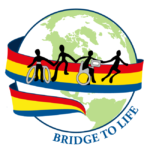Written language is a powerful and versatile tool for learning, communication, and thought (Sturm & Koppenhaver, 2000). Using the alphabet to write is especially critical for students who use AAC because the development of conventional writing opens unlimited possibilities for self-expression across multiple contexts. To become literate, all students, including those who use AAC, need access to effective writing instruction that supports engagement in authentic, meaningful, and frequent writing experiences.
The goal of this session is to describe elements of a comprehensive, high-quality writing program and its implementation with students with complex communication needs who use AAC. This writing program utilizes scientifically-based writing practices for all students, and draws upon the federal Common Core Standards for writing (Common Core Standards State Initiative, 2010), with an additional focus toward the student who uses AAC. Participants will also learn about ways in which the quantity and quality of student writing, for the most beginning writers, can be measured and used to foster growth over time. The Bridge school staff will share how this program is implemented at The Bridge School with preschool and elementary students who use AAC and will describe the educational benefits to the students.
Designed to foster development across language, communication, and writing skills, Dr. Sturm will describe a Writer’s Workshop program, paired with cogntive strategy instruction, which she has been developing for five years. This curriculum is comprised of four core components: mini-lessons, independent writing, peer and teacher conferences, and Author’s Chair. This program uniquely combines Writer’s Workshop with strategy instruction through mini-lessons that offer extensive modeling, a discussion of goals and purposes, and student engagement in guided practice and feedback. Dr. Sturm will describe how, during these mini-lessons, students also receive strategy tip sheets that target core concepts from the lessons. She will also share how these tip sheets are integrated within independent writing sessions, and during Author’s Chair, to support communication and writing development. An organizational system for students’ materials, called Author’s Toolkits, will be described. Each Author’s Toolkit contains individualized student materials including: strategy tip sheets, communication boards, photo-based topic supports, and an ever growing supply of written work authored by each student. A culuminating aspect of this writing program is the Meet the Author event, a venue used to celebrate students’ authorship. This special event, which includes important individuals in each student’s life, will be shared through photos, writing samples, and outcome measures.
Next, this presentation will describe how multi-level instruction can be provided while also addressing individualized goals for students who use AAC. Through case examples The Bridge School staff will describe how this writing program was implemented. Adaptations were made across the curriculum, from mini-lessons to Author’s chair to Meet the Author, that took into account the multiple considerations for students who use AAC, such as physical access, sensory needs, choice of high tech and no tech communication tools, selection of multiple “pencils”, and adult scaffolds used throughout phases of each writing session. Finally, we will provide a description of how students use the tools, skills, and strategies developed in the writing program to write across curricular areas as outlined in the Common Core Standards.


